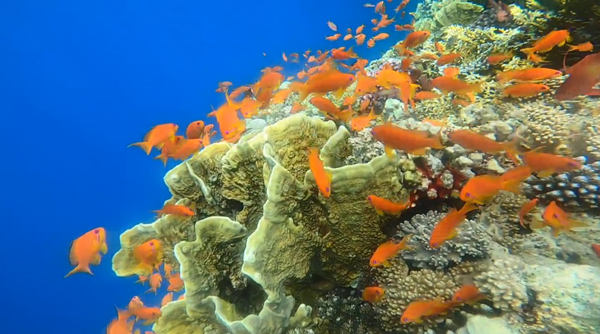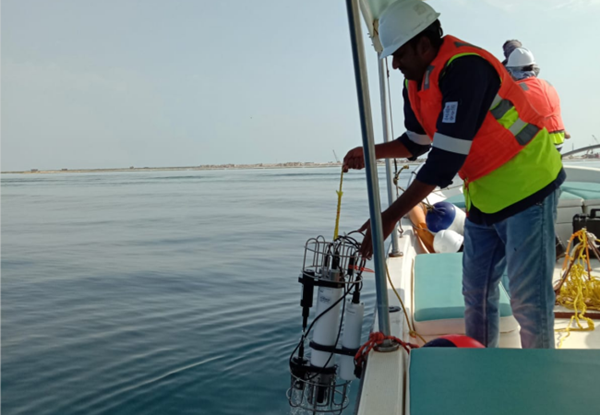Located on the western coast of the Red Sea in Saudi Arabia, the Red Sea development project is a large-scale undertaking contracted by China Harbor Engineering Company Ltd. and CCCC Fourth Harbor Engineering Co., Ltd., both subsidiaries of China Communications Construction Company Ltd (CCCC). Its strategic goal is to develop a unique international luxury tourist destination - the "Maldives" of Saudi Arabia. Due to the special natural environment of the project, the buyer put forward strict requirements for the protection of the original ecological environment of the island.

A view of the coral under the Red Sea [Photo/sasac.gov.cn]
The coral reef is the most complex and diverse, as well as one of the most fragile parts of the whole marine ecosystem. The Red Sea has the richest and densest coral reef in the Western Indian Ocean. The project includes about 70 species of corals that provides habitats for tens of thousands of fish and invertebrates, making maintaining biodiversity essential.
The project department set a 10-meter area close to the coral reef as the coral buffer protection zone. If any project work, such as the temporary construction platform backfill and excavation and dredging work, might lead to increase of the turbidity of the water body, a continuous and closed anti-fouling curtain would be set. Meanwhile, the direct backfill of the untreated earth was blocked from entering the marine environment. In addition, no-navigation and no-anchor zones were set in the area where the coral reef is located to avoid direct damage to the sea bed and ocean.

A worker at the Red Sea development project in Saudi Arabia [Photo provided to sasac.gov.cn]
In order to guarantee that the qualified water condition would meet the coral survival conditions, the project department adopted various means to monitor the TSS concentration and turbidity of the surrounding waters. A group of marine scientists from the Center for Environment & Water Research Institute, King Fahd University of Petroleum and Minerals Dhahran, Saudi Arabia was also hired to give third-party environmental monitoring services, which includes using advanced instruments to sample and test the seawater near the construction area. The project department also purchased and applied 24-hour water quality testing buoy sensors to test the real-time water pH, dissolved oxygen value, turbidity and other water quality data. The data can be uploaded to the matching Hydrophere online system through the local communications operators, where it can be read and searched anytime. The system is also a platform to give alarms if the water quality monitoring value exceeds the warning value. In that case, the project department would slow down the construction speed, check out the protective measures, look for the spills, and take timely remedial measures. If the value continued to rise or exceeded the alert value, the department would stop the construction until the suspended sediment concentration returned to the natural level. Meanwhile, the sea-related operations and other activities that may cause an increase in water turbidity were avoided and reduced in critical periods and key areas such as those involving coral spawning.
The ecological and environmental protection work of the project has been highly recognized by the buyer as the biodiversity and marine ecological environment had been fully protected. Divers have sent back videos showing splendid views of coral reefs.
(Executive editor: Li Zhiyong)